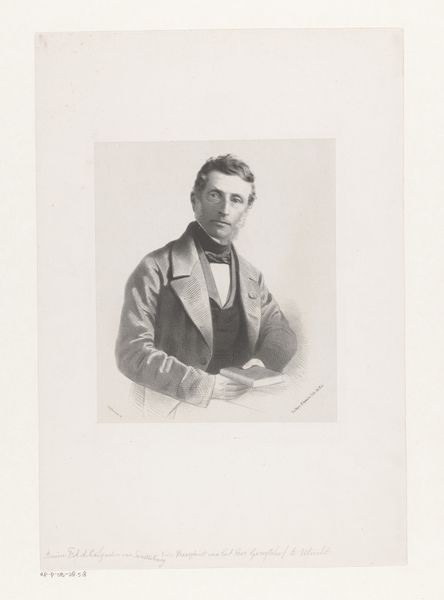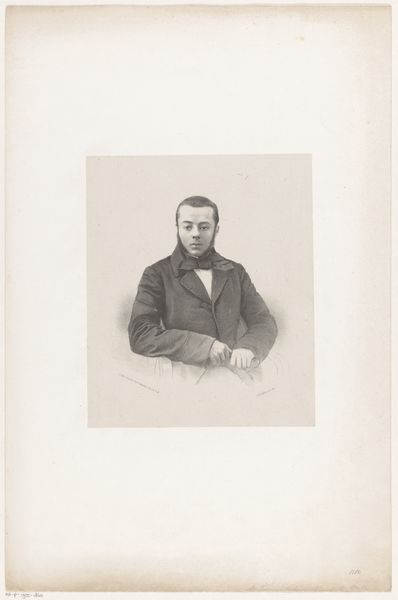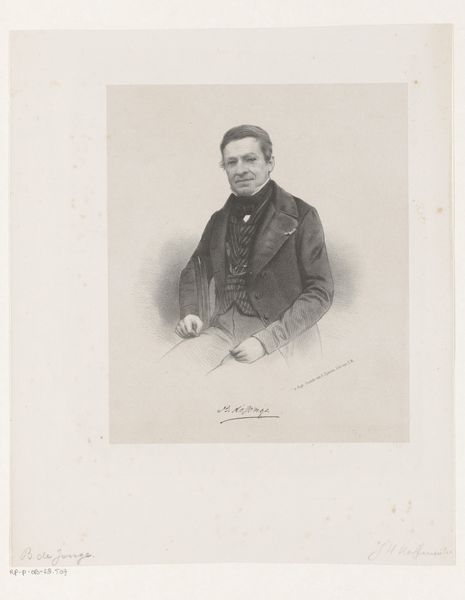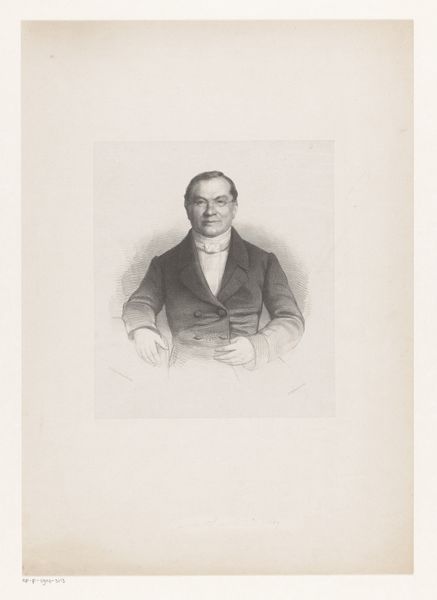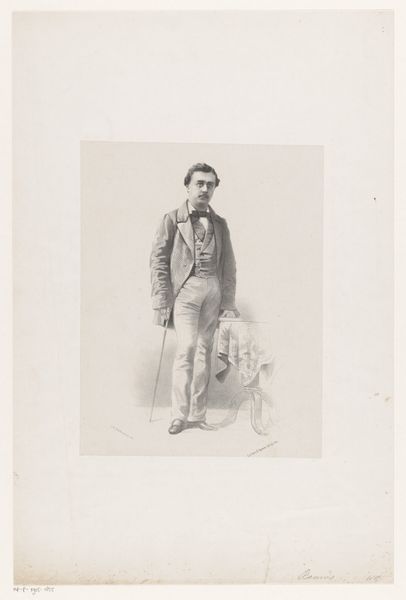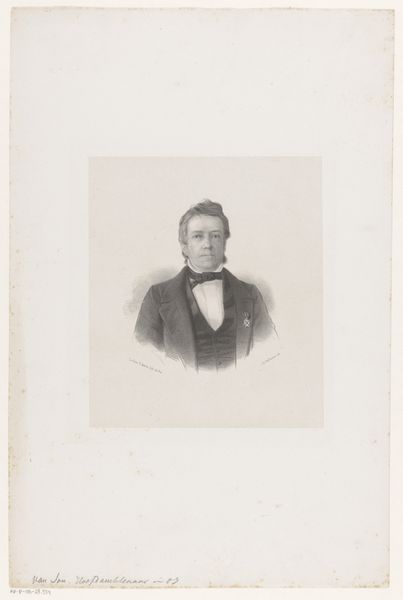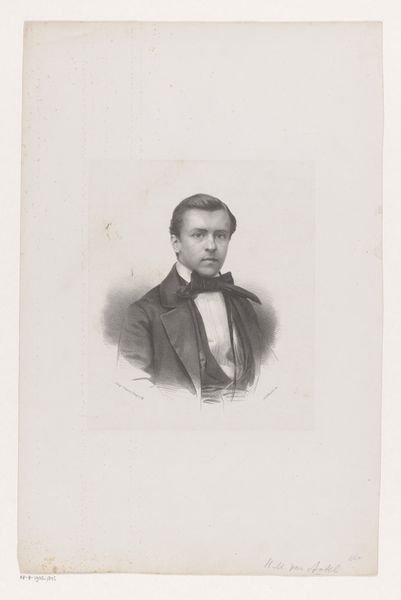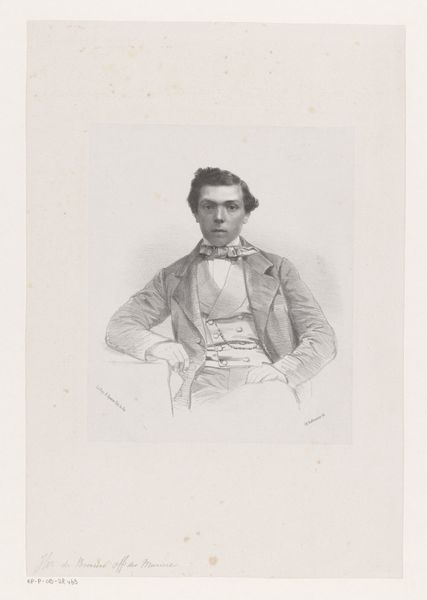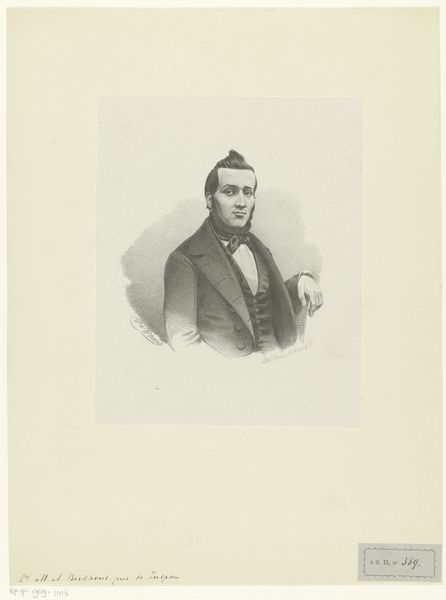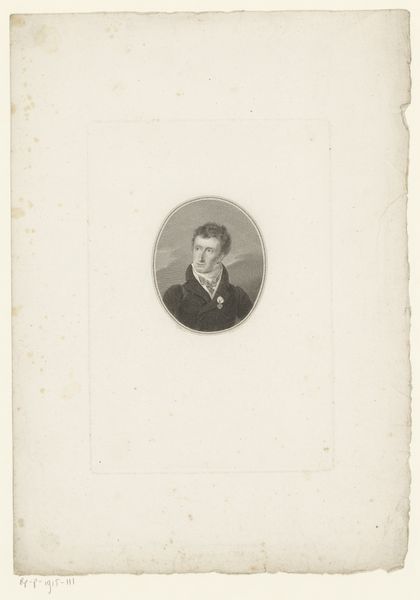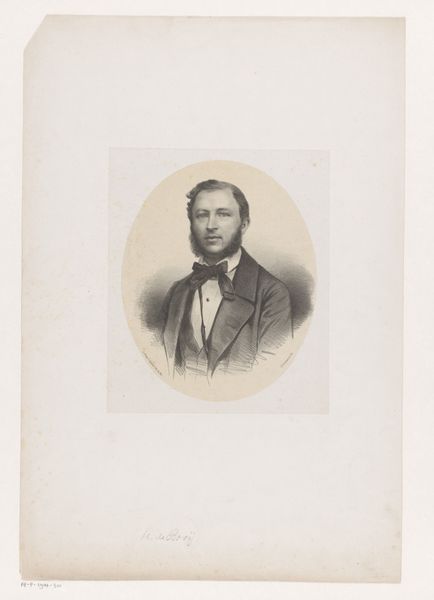
#
portrait
# print
#
genre-painting
#
realism
Dimensions: height 455 mm, width 305 mm
Copyright: Rijks Museum: Open Domain
Johan Hendrik Hoffmeister created this portrait of an unknown man in the 19th century using lithography. This printmaking process relies on the chemical repulsion between oil and water. First, the artist would draw the portrait onto a flat stone or metal plate with a greasy crayon or ink. The stone is then treated with a chemical etch, making the drawn areas receptive to oil-based ink and the blank areas receptive to water. When the surface is inked, the ink adheres only to the drawing. Finally, the image is transferred to paper using a press. Lithography allowed for relatively quick and inexpensive reproduction, which democratized image production. This portrait, with its fine lines and detailed shading, demonstrates the skill required to master this technique. Consider how the material qualities of the lithographic stone and the artist’s handwork combine to create this compelling image. Ultimately, it prompts us to consider the social context of image-making in the 19th century, and the labor involved in producing even seemingly simple portraits.
Comments
No comments
Be the first to comment and join the conversation on the ultimate creative platform.
